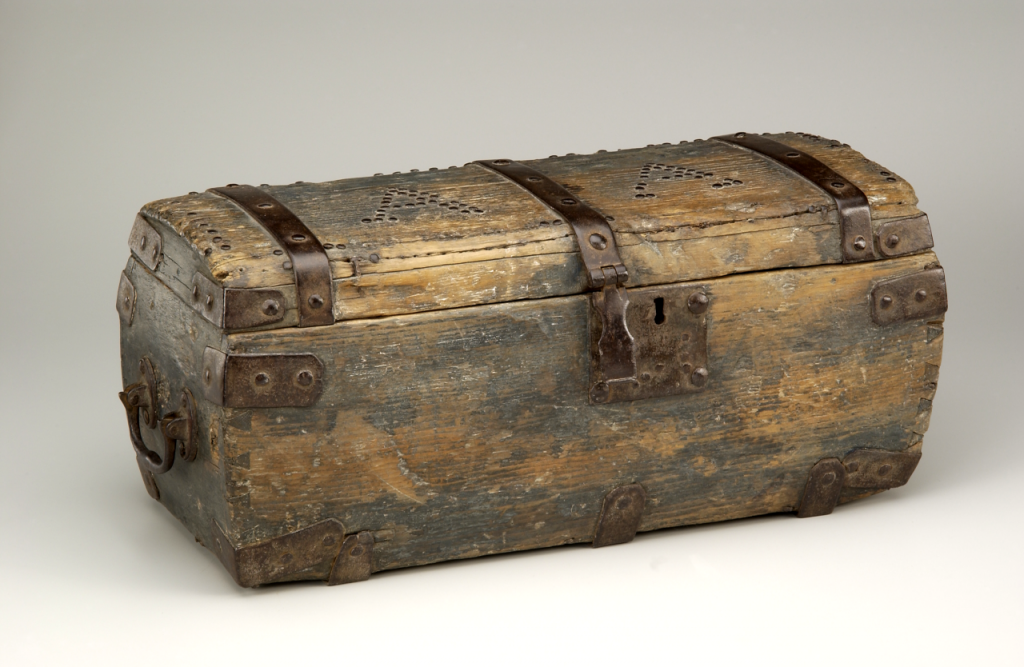Background
In the early 1700s, the new French colony of Louisiana was facing a population crisis. Jean Baptiste Le Moyne de Bienville, the Governor of Louisiana, asked the French government to send good, virgin women who could be married to the male French colonists in the territory. He was probably hoping for something similar to the Filles du Roi of New France, young gentlewomen who agreed to immigrate in exchange for a dowry paid by the king and a chance at a prosperous marriage.
Instead, the government sent women gathered from the grimmest institutions in France. Of the 258 women shipped to Louisiana between 1719 and 1721, twenty-nine were from orphanages, thirty-five were from poor houses, and 194 were convicted criminals from the infamous prison La Force. They were called the Casket Girls, after the cassettes, or small trunks, they brought with them. Louisiana officials were appalled at the women’s history and complained about their behavior. Some men refused to marry them.
It is unlikely that the women had much choice in the matter of their immigration. French officials referred to them as “women without futures.” The youngest was only 12 years old, but had been a sex worker in Paris since the age of six. Some of the women’s families actually demanded they be exiled to the colonies, so they could be rid of them. The trip across the Atlantic was nightmarish. The women were chained together and kept in the ship’s hold. Those that survived the journey were moved to warehouses in New Orleans, Biloxi, and Mobile, so they could be reviewed by any man looking for a wife. Most were married within six months of their arrival.
Over time, many of the Casket Girls were able to establish themselves as a part of the fabric of Louisiana society. But their triumph does not erase that they were imported, perhaps against their will, to serve the sexual and procreative needs of the colony’s men.
About the Artifacts
The Casket Girls got their name from trunks like this one, which they used to transport their belonging to the Louisiana colony. At 9½” high x 22½” long x 10” wide, these trunks did not give the women much room to pack everything they would need to start a new life.
Vocabulary
- dowry: Property a woman brought with her into marriage.
- Filles du Roi (“Daughters of the King”): Women who agreed to move to New France and marry colonists in exchange for passage across the Atlantic and a dowry.
- hold: The cargo area on a ship. Without windows or comfortable accommodations.
- Louisiana: Founded in 1682, this colony was the second North American colony claimed by the French. The territory stretched from the Great Lakes to the Gulf of Mexico, between the Appalachian and Rocky Mountains.
- poor house: An institution where people who could not support themselves could live and work. Living conditions in poor houses were often terrible.
- cassette: A trunk.
Discussion Questions
- What does the size of this trunk tell us about the status of the Casket Girls?
- How does this story complicate our understanding of the reasons for immigrating to the Americas?
- What does this episode reveal about the value of women in colonial Louisiana?
- Why is it important to learn about the exploitation of women in history?
Suggested Activities
- Challenge your students to pack a trunk of this size with everything they would need to start a new life. What would they take? What would be left behind?
- Combine this object with the painting of the Filles du Roi for a larger lesson on the French colonial government’s attempts to populate their territories. Compare the way the two groups were treated. Why was one revered while the other was reviled? How are these women remembered today?
- The sexual exploitation of women was practiced throughout the colonial Americas. You can learn more about this widespread problem by exploring the resources below: Women and the Code Noir, Life Story: Marie-Josèphe Angélique, Marrying into the New World, Legislating Reproduction and Racial Difference, Life Story: Malitzen (La Malinche), Life on the Encomienda, and Life Story: Doña Teresa de Aguilera y Roche.
- Ask students to write a paper about reasons people came to live in the colonies of North America by studying this artifact and the following resources: Life Story: Dennis and Hannah Holland, Life Story: Thomas(ine) Hall, The Middle Passage, Life Story: Maria Sibylla Merian, Life Story: Lady Deborah Moody, Catalina Trico, and the Filles du Roi.
Themes
IMMIGRATION, MIGRATION, AND SETTLEMENT







